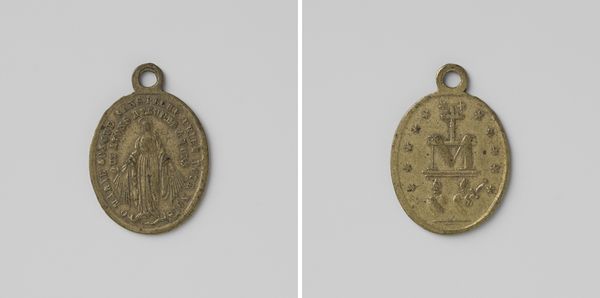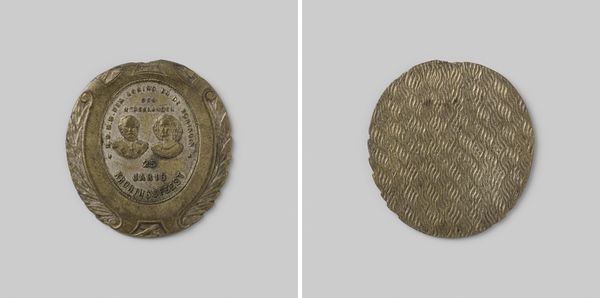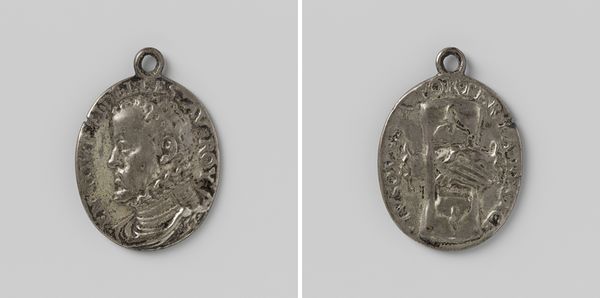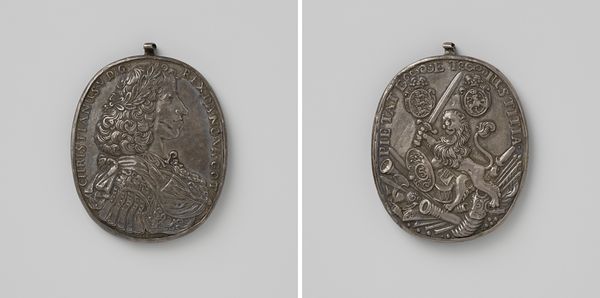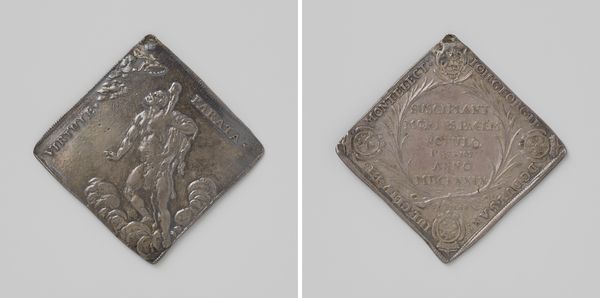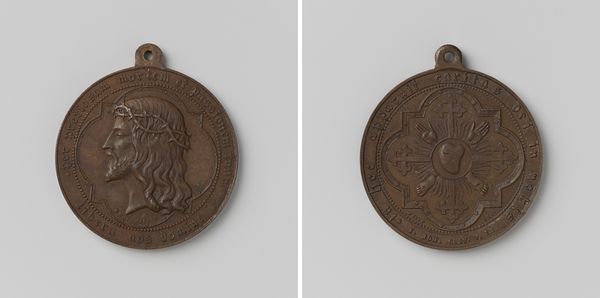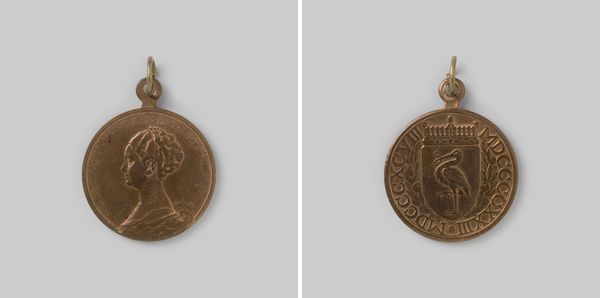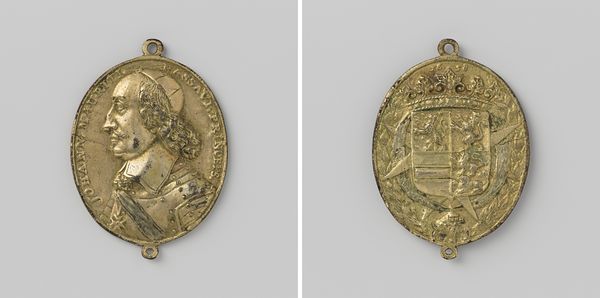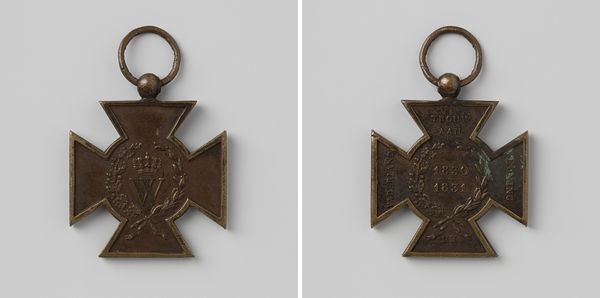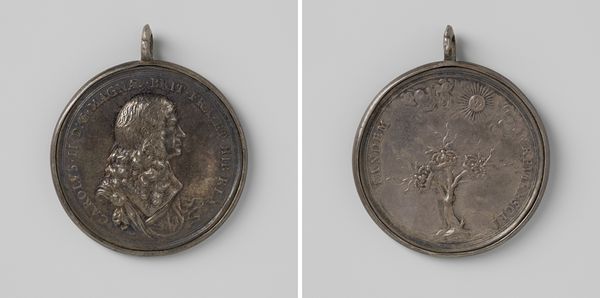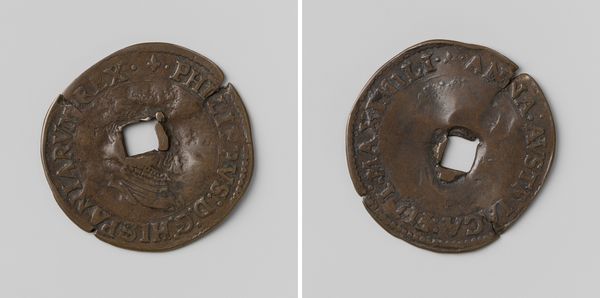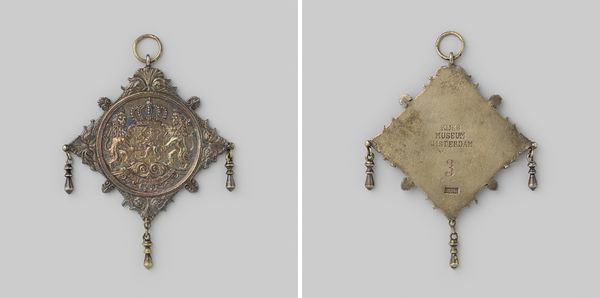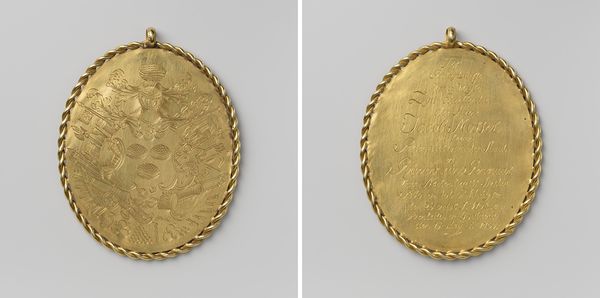
Huidekopers-, leerlooiers- en schoenmakersgilde van Alkmaar, gildepenning van Andries Geerhart met no. 186 Possibly 1778
0:00
0:00
Dimensions: height 5.7 cm, width 4.5 cm, weight 26.23 gr
Copyright: Rijks Museum: Open Domain
Curator: Looking at this intriguing metal object, we see a guild badge—or "gildepenning"—crafted around 1778, representing the tanners', curriers', and shoemakers' guild of Alkmaar. It bears the name Andries Geerhart and the number 186. What strikes you most about it? Editor: It evokes a powerful sense of past lives and histories. There’s something almost talismanic about its design and how worn and aged it appears. I see two sides to it - on one side there is an image that could represent an ideal; while the reverse side seems to make claims to truth and being. Curator: Indeed. Guild badges such as this one were powerful emblems of identity, specifically linked to trade associations deeply entrenched in the sociopolitical hierarchies of the Dutch Republic. For members, these badges served not only as identifiers but also as representations of their livelihoods and status. We should also consider the function that trade has in structuring early modernity. Editor: The figure depicted bears a halo which reminds me of the depictions of Christian Saints such as St. Francis of Assisi; or St. Crispin the patron saint of leather workers shoemakers, tanners, and curriers. Looking at it this way gives it a layer of moral sanction as a craft. How does the material factor in, do you think? Curator: Definitely, the medium itself, likely cast bronze or a similar alloy, lends the piece a sense of durability and weight. The deliberate choice of material underscores not just a commitment to longevity but also signifies that these trades were mainstays of society. Moreover, the engraving, despite its delicate execution, further affirms the personal connection of Andries Geerhart. This allows an exploration of not only community values and shared work identity, but also personhood and pride in craft. Editor: The border details framing each image add to the emotionality: you can feel their heaviness in relation to each respective figure. They also seem like a marker or even a boundary. Curator: You make an important point: there's almost a negotiation of inside versus outside within the same token: what values does the community keep from strangers and interlopers, and what values are welcome in exchange? It really underlines how badges function as mechanisms of access and control within historical artisanal systems. Editor: Considering the economic and religious crosscurrents of the 18th century, such symbolic tokens represented the strength and resilience of guilds in their economic and political landscapes. Curator: Yes, exploring it today, we realize this seemingly simple object unlocks significant dialogues regarding work, status, identity, and their multifaceted intersections. Editor: Indeed, it serves as a small, dense material artifact brimming with social memory and embedded codes just waiting to be decrypted.
Comments
No comments
Be the first to comment and join the conversation on the ultimate creative platform.
